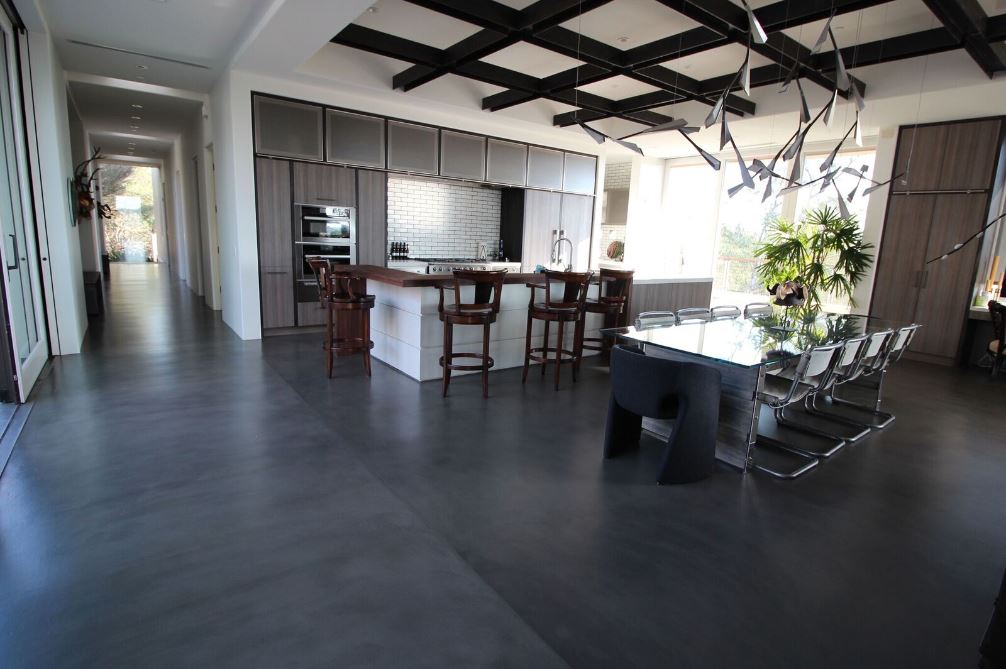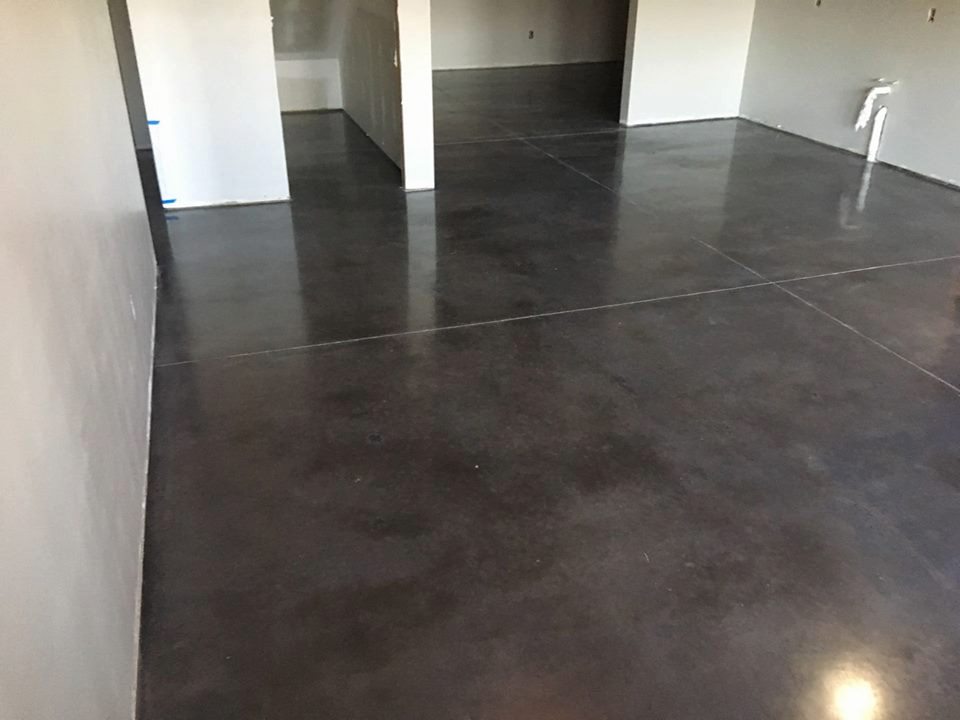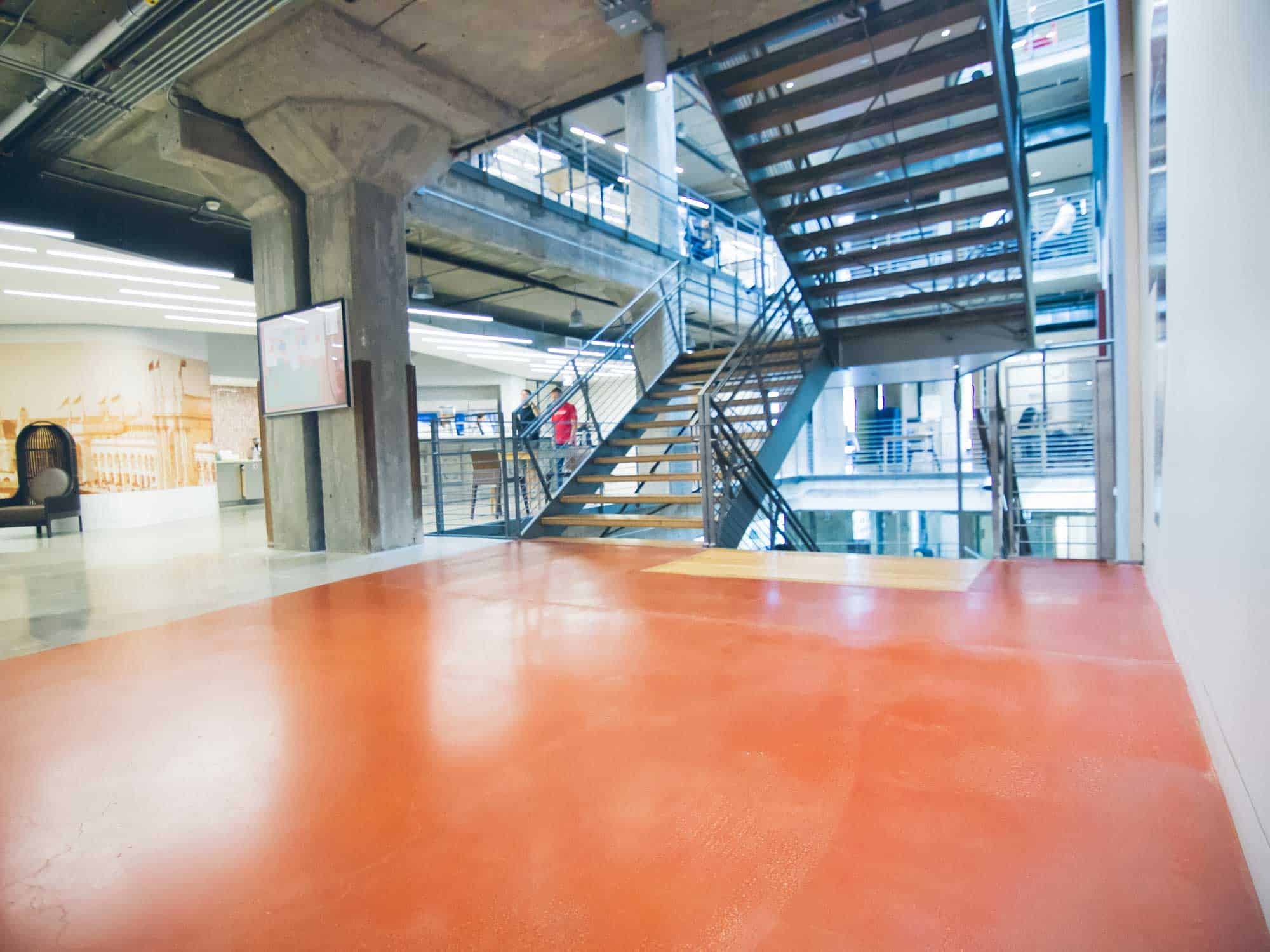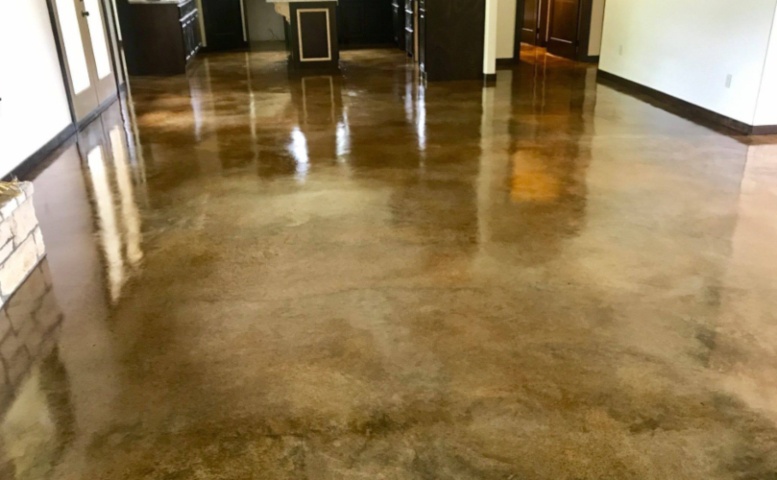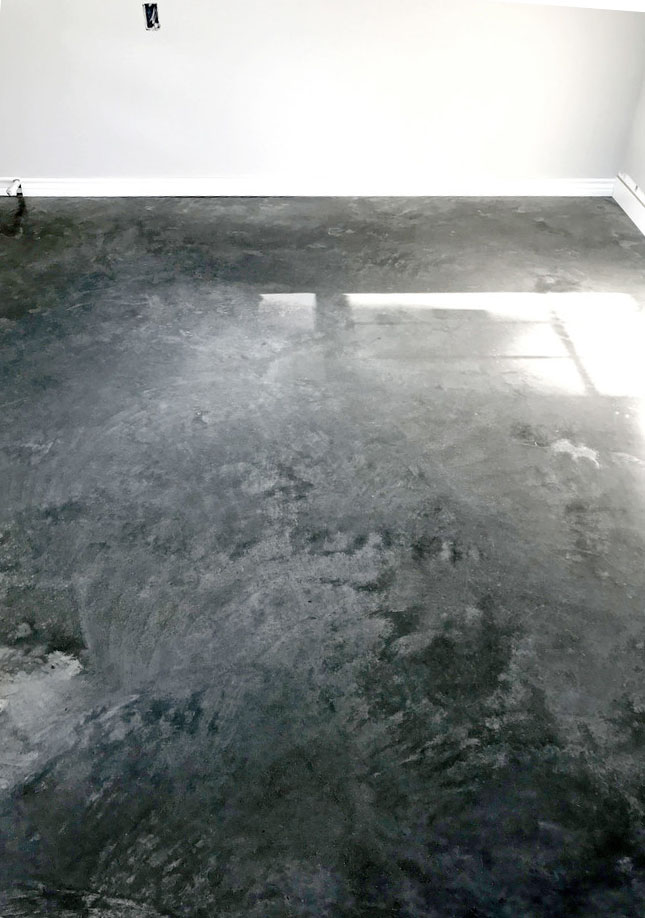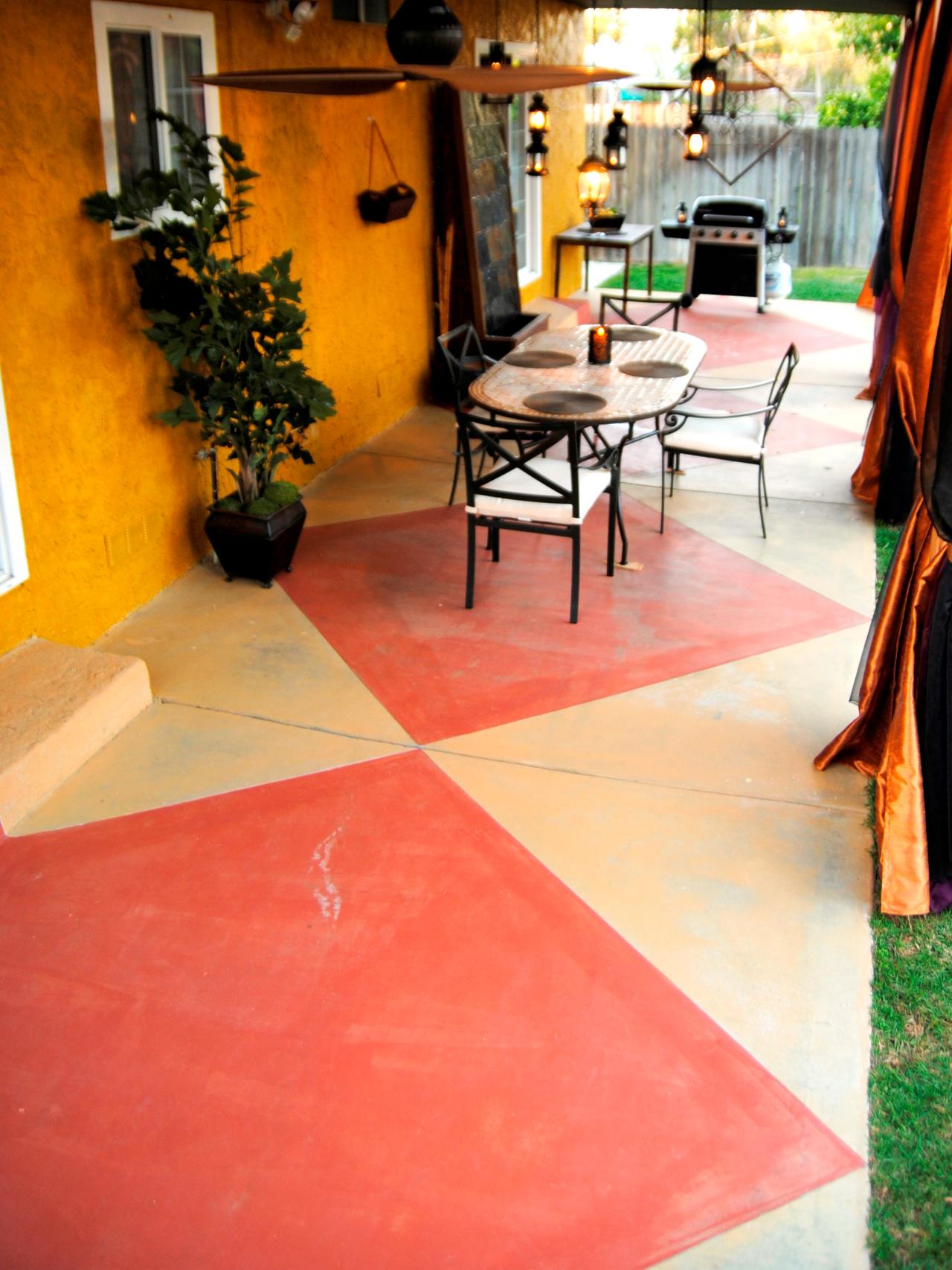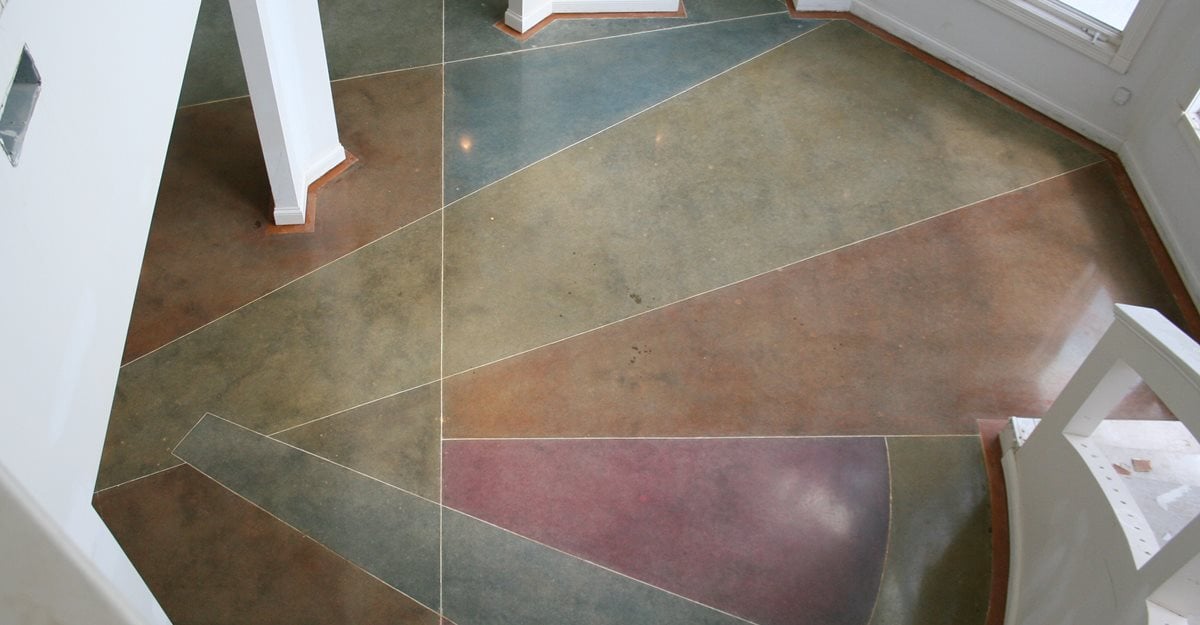Are you tired of gazing at your home or office’s dull, monotonous concrete floor? It’s time to break free from the ordinary and embark on an exciting journey to transform your floor into a captivating work of art. Coloring concrete floors is an excellent way to add personality, style, and vibrancy to your surroundings. In this guide, we’ll unveil the secrets to achieving a visually stunning concrete floor that will leave everyone in awe.
Prepare the Canvas: Before diving into the world of colors, it’s crucial to ensure your concrete floor is primed and ready. Begin by cleaning the surface thoroughly, removing any dirt, grime, or old paint. Smooth imperfections with a sander or grinder, ensuring a pristine canvas for your artistic endeavor.
Choose Your Palette: Now comes the exhilarating part – selecting the perfect colors to bring your concrete floor to life. Be bold and expressive, letting your imagination run wild. Whether you opt for earthy tones that evoke warmth or vibrant hues that energize your space, the choice is yours. Consider the ambiance you want to create and let your color palette reflect your unique style.
Prep and Protect: To ensure a flawless application, preparing the surface and protecting your surroundings is crucial. Tape off baseboards, walls, and other adjacent areas to avoid accidental splatters. Cover nearby furniture and fixtures with protective sheets or plastic to safeguard them from any stray droplets.
Primer Power: To achieve optimal color saturation and longevity, start by applying a concrete primer. This step not only enhances the adhesive properties of the color but also acts as a protective barrier, guarding against future wear and tear. Opt for a primer that suits your chosen colors, which can influence the outcome.
Brush or Roll: Now, it’s time to unleash your inner artist. Armed with a paintbrush or roller, apply the chosen color to your concrete floor. Allow your strokes to flow naturally, embracing the uniqueness of each brushstroke. Engage your senses as you witness the transformation from raw concrete to a stunning display of colors.
Experiment with Techniques: Don’t settle for a plain, uniform appearance. Elevate your concrete floor by experimenting with various techniques. From swirling and marbling to stenciling and stamping, the possibilities are endless. Let your creativity soar as you explore these techniques, turning your floor into an awe-inspiring masterpiece.
Seal the Deal: To ensure your colored concrete floor remains as captivating as the day it was created, finish the process by sealing it. A concrete sealer protects against stains, scratches, and fading, prolonging the life and vibrancy of your newly transformed space. Choose a sealer that complements your desired sheen level, whether glossy or matte.
Maintenance Matters: Once your concrete floor is complete, maintaining its brilliance becomes essential. Regular cleaning and gentle maintenance are the keys to preserving its beauty. Sweep away debris regularly and use a pH-neutral cleaner to keep it fresh and lustrous. Embrace this routine, and your floor will continue to shine for years.
So, are you ready to embark on this captivating journey of coloring your concrete floor? Let your creative spirit flourish as you infuse life into your surroundings. Break free from the mundane and revel in the transformation that awaits. Your concrete floor will become an enticing masterpiece, reflecting your unique style and leaving a lasting impression on all who encounter it.
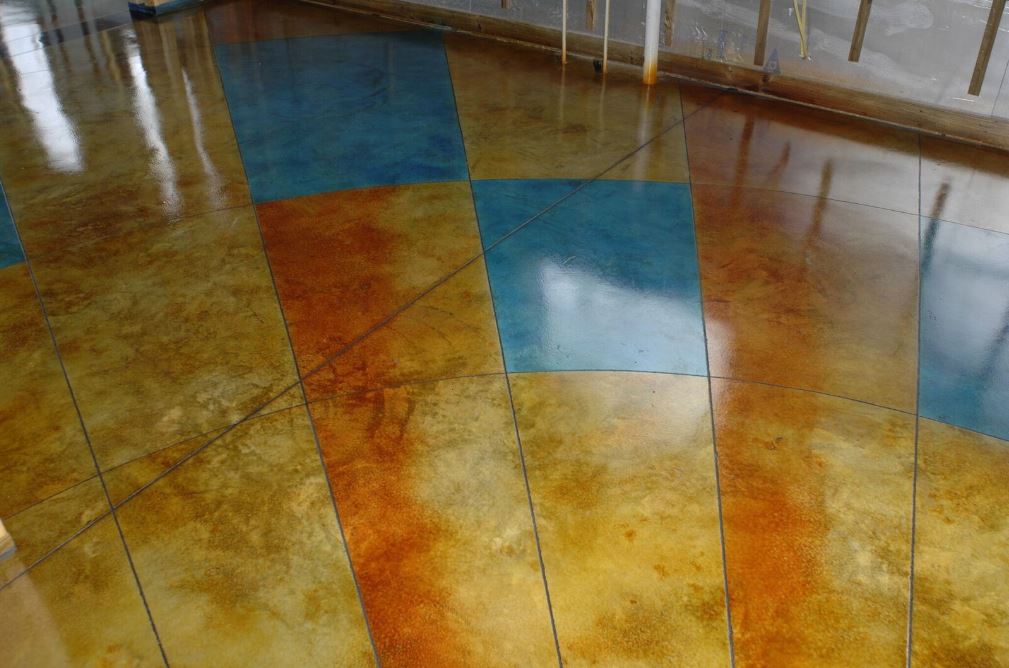
Concrete Floor Paint Colors – Indoor Concrete kitchen floor
How To Dye Interior Concrete Floors Direct Colors
How to Bring Floors to Life with Colored Concrete – The House
Concrete Polishing Dye – Achieving Color Concrete Floor Supply
Polished Concrete Floors Creative Maintenance Solutions
How to stain interior concrete floors in 5 steps – Prosoco
How Much Does it Cost to Stain Concrete Floors Yourself?
An In-Depth Look at 30 Concrete Floor Designs – Concrete Flooring
Styles of Stained Concrete Floors u2014 Craftsman Concrete Floors
How-To Apply Smith Color to a Concrete Floor Using the Flow Method (Video) SealGreen.com
Interior Floors Created Using Davis Colors Concrete Pigments
How to Stain Concrete Floors Tips for Staining Concrete Floors
Concrete Dyes – Purchasing u0026 Application Tips – Concrete Network
Related Posts:
- How To Acid Stain Concrete Floors Yourself
- Indoor Concrete Flooring Ideas
- Patio Concrete Floor Coating
- How To Stain Concrete Floors Outdoors
- DIY Stained Concrete Floors In Homes
- Concrete Floors Look Like Marble
- Concrete Floor Slab Mix Ratio
- Dark Brown Concrete Floor Paint
- Pretty Concrete Floors
- Stained Concrete Floors For Homes
How To Color Concrete Floor
Coloring a concrete floor is a great way to add character and depth to the interior of any space. While it may seem like a daunting task, coloring concrete is actually quite simple. With the right supplies and some patience, you can easily create an eye-catching masterpiece that will stand the test of time. In this article, we’ll cover everything from choosing the right color to applying it correctly – so let’s get started!
What You’ll Need For Coloring Concrete Floors
Before you start, there are a few supplies you’ll need:
– Concrete floor paint: Choose a paint that is specifically designed for concrete surfaces. Make sure you choose one with a good UV protection rating to ensure that your floor won’t fade in the sun.
– Paint roller and tray: Use a roller with a thick nap to ensure even coverage of your paint. A roller tray will make application easier.
– Painter’s tape: This will help you achieve neat edges and crisp lines.
– Dry floor sealer: A sealer will protect your newly-colored concrete floor from staining and damage.
– Drop cloths: Lay down drop cloths to protect your surrounding surfaces from paint spills.
Preparing The Floor For Painting
Once you have all of the necessary supplies, you can begin prepping the floor for painting. Here are some steps to take in order to ensure that your paint job looks its best:
– Sweep and mop the surface of the concrete floor thoroughly. This will remove any dirt or debris that could affect the longevity of your paint job.
– Repair any cracks or holes in the concrete with a patching compound or other filler material. Allow it to dry completely before continuing.
– Apply painter’s tape along the edges of walls, baseboards, or other surfaces near your floor. This will help you create neat lines when painting.
– Apply a coat of dry floor sealer to the entire area that you’ll be painting. This will help protect the surface from stains and damage caused by moisture and other elements. Allow it to dry completely before proceeding to the next step.
Painting The Concrete Floor
Now that you have prepped the area, you can start painting! Here’s how:
– Pour your paint into the roller tray and roll it onto the surface of the concrete with long strokes in one direction. Make sure to overlap each stroke slightly for an even finish.
– Allow the first coat to dry completely before applying a second coat if necessary (most paints require two coats for best results).
– Once both coats have dried, carefully remove the painter’s tape from around edges and other surfaces near your newly-painted floor.
– Finally, apply an additional coat of dry floor sealer to protect your new color from damage caused by foot traffic or moisture.
FAQ About Coloring Concrete Floors
Coloring concrete floors can be a rewarding process if done right – but there are still some questions people often have about this project. Here are some of the most common ones along with their answers:
Q: How long does it take for colored concrete floors to dry?
A: It typically takes 24 hours for colored concrete floors to dry completely – but this may vary depending on temperature, humidity, and other factors. Always check product labels for specific drying times before beginning your project.
Q: Is it necessary to use sealer on colored concrete floors?
A: Yes, sealer is essential for preventing staining and damage caused by foot traffic or moisture – so it’s important to use it if you want your newly-colored floor to last for years to come.
Q: What type of paint should I use on my colored concrete floors?
A: Always choose a paint specifically designed for concrete surfaces – as this will ensure that your color won’t fade in the sun or wear away over time due to foot traffic or moisture exposure.


